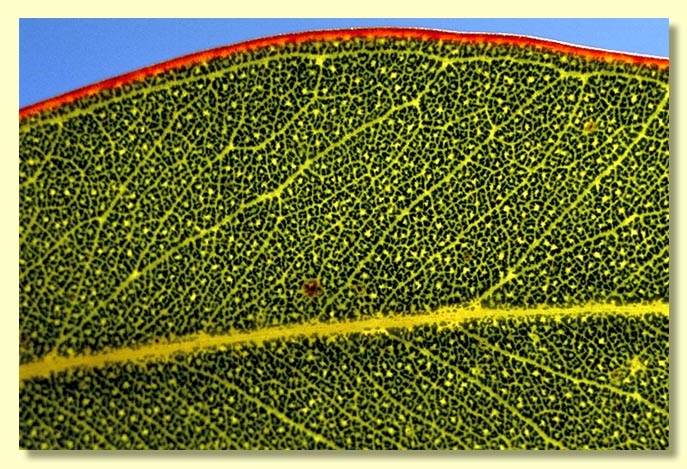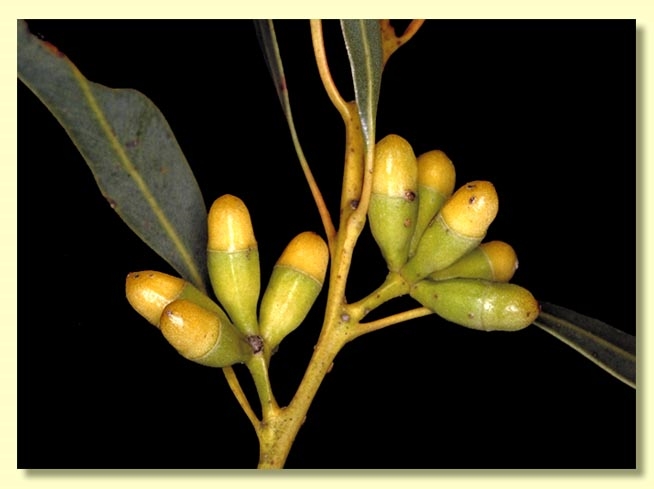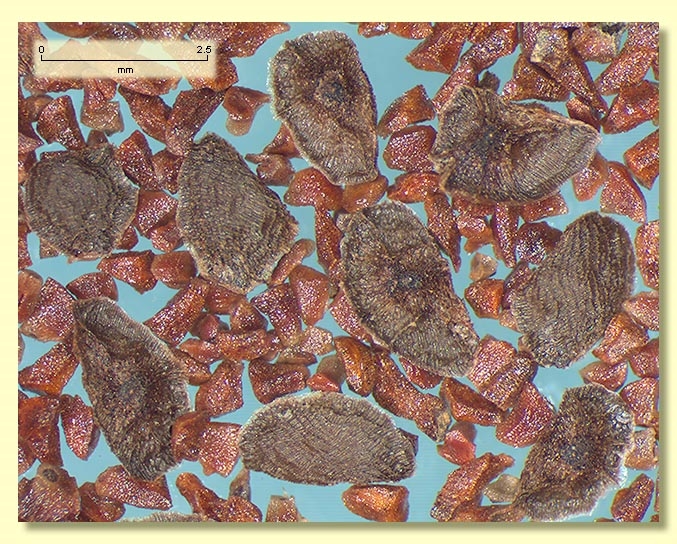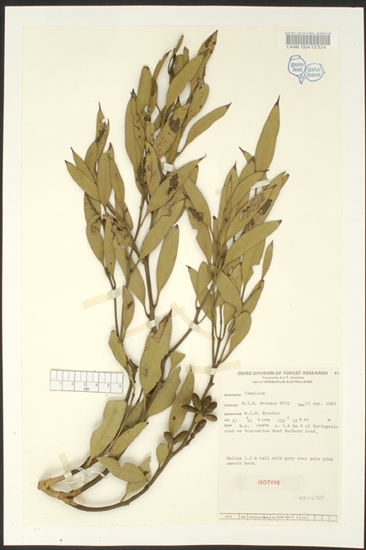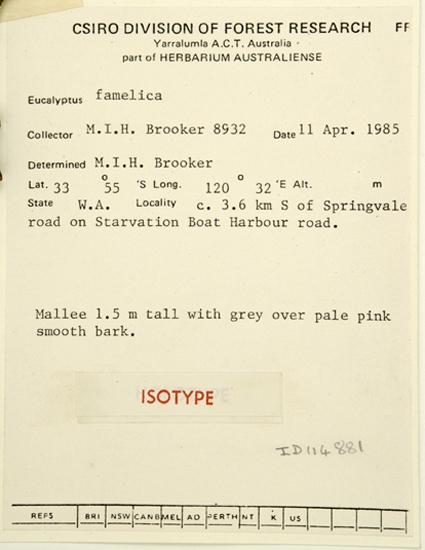Eucalyptus | Symphyomyrtus | Dumaria | Rigentes
Euclid - Online edition
Eucalyptus famelica
Bark with thin grey rough and fibrous for up to 0.5 m of trunks of larger plants or smooth throughout, grey and pale pinkish brown.
Branchlets with pale oil glands in the pith, sometimes few and only at the nodes.
Juvenile growth (coppice or field seedlings to 50 cm): stems square in cross-section; juvenile leaves always petiolate, alternate, elliptical to ovate, becoming lanceolate, 4.5–7.5 cm long, 1.5–3 cm wide, greyish green.
Adult leaves alternate, petioles 1–2.5 cm long; blade lanceolate, 4.5–11 cm long, 0.9–2.3 cm wide, base tapering to petiole, margin entire, apex pointed, concolorous, glossy, green, side-veins at an acute or wider angle to midrib, reticulation dense to very dense, intramarginal vein close to margin, oil glands mostly intersectional or few and obscure.
Inflorescence axillary unbranched, peduncles 0.6–1.3 cm long, buds 7 per umbel, subsessile to shortly pedicellate (pedicels 0–0.4 cm long). Mature buds more or less cylindrical to fusiform with many shallow longitudinal ribs two of which may be more prominent (0.9–1.7 cm long, 0.4–0.7 cm wide), scar present, operculum bluntly conical (0.4–0.7 cm long), stamens inflexed, anthers oblong to wedge-shaped, versatile, dorsifixed, dehiscing by longitudinal slits, style long and straight, stigma blunt to tapered, locules 3 to 5, the placentae each with 4 vertical rows of ovules. Flowers creamy white.
Fruit sessile to shortly pedicellate (pedicels 0–0.3 cm long), cupular to cylindrical, faintly ribbed or smooth, 0.8–1.2 cm long, 0.7–1 cm wide, disc descending vertically, valves 3 to 5, enclosed.
Seeds brown, 1.5–3.5 mm long, flattened-ovoid, dorsal surface with conspicuous but shallow reticulum, slightly ridged ventrally and with a marginal flange around ca half of seed, hilum ventral/terminal.
Cultivated seedlings (measured at node 10): cotyledons reniform; stems rounded or square in cross-section; leaves always petiolate, opposite for 2 to 4 nodes then alternate, lanceolate, 6–9.5 cm long, 1.3–3 cm wide, dull, green to grey-green.
Flowering has been recorded in April, July, September and November.
A mallee endemic to Western Australia, of very restricted distribution near Starvation Boat Harbour and adjacent areas of the Jerdacuttup Plain north-east of Hopetoun to inland of Stoke's Inlet. At the type locality it occurs inland from the coastal dunes on low ground originally a freshwater swamp, now becoming saline through nearby agricultural practices. At other sites it appears to tolerate saline waterlogged soils and forms an open mallee community. The bark is smooth and the adult leaves glossy green.
Eucalyptus famelica belongs in Eucalyptus subgenus Symphyomyrtus section Dumaria because the buds have two opercula, stamens are strongly inflexed, ovules are in four (six, eight or 10) rows on the placentae and cotyledons are reniform. E. famelica is closely related to only two other species—E. rigens and E. litorea—both of which occur east of its distribution. Together the three species form series Rigentes, further characterised by the brown flattened-pyramidal seed with a partial marginal flange and the branchlets having sparse clear pith oil glands. The species of series Rigentes might be confused with series Incrassatae. which has black pyramidal seeds, and with series Furfuraceae (e.g. E. scyphocalyx), which has flat, ventrally scurfy seeds.
E. famelica with seven-flowered inflorescences clearly differs from the three-flowered E. rigens of salt lake country north of Esperance. It is distinguished from the seven-budded E. litorea, which occurs on low dunes around saline coastal flats near Israelite Bay, by the smooth bark (rough in E. litorea) and cylindrical to fusiform buds (ovoid to broadly fusiform in E. litorea) and more rounded opercula (consistently beaked opercula in E. litorea).



